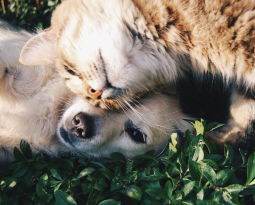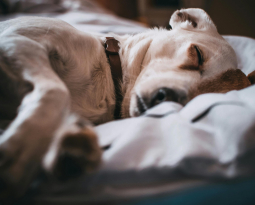Last month we talked a bit about how much you should be feeding your dog to keep them happy, healthy, and at a good weight. While dogs are pretty voracious eaters cats can be pickier creatures and range from too picky, to garbage disposals. With that in mind, how often should you feed your cat?
How Much to Feed Your Cat
There is a lot of conflicting advice out there on how often you should feed your cat and how much. Some sites may say once a day, others say leave a bowl full constantly. Figuring out a schedule that works for your pet shouldn’t be difficult, it shouldn’t be a riddle. Understand a few key ideas and you can come up with a feeding schedule that works for you!
First, it’s important to address that cats are creatures of habits. They like to do the same things most days, at the same times, and sleep in the same spots. They’re a lot like us when you think about it!
Use this to your advantage by creating a regular feeding schedule for your feline friend and keep to it! A regular feeding schedule can do a few positive things for cats – keeps them fed yes, but it also helps provide a regularly event in their day that they can count on. If your cat is having trouble coping with a new change in the home (say a new pet, or moving to a new place) the feeding schedule helps comfort them.
There are other health reasons for a regular feeding schedule as well! When your cat is acclimated to eating at the same times every day, their body becomes primed to expect food at those times – which means they get hungary! Now hunger can be useful, as they will be more likely to eat new foods, making switching up their food easier.
Ok, So Feed Them Regularly… But How Often?
Cats, like humans, have a pretty simple stomach anatomy all things considered. This means they fill up with food, empty over a few hours as it moves through the stomach to the intestines. Then after about 8-10 hours the stomach, fully empty, sends signals to the brain “Hey, we should eat!”
Because of this process, the best schedule for your cat is two meals per day, about 12 hours apart. This will keep your pet happily fed and without going hungry! If over 12 hours pass between meals it can cause your cat’s stomach to become hyper acidic
Watch For Eating Habit Changes
So now that you’ve gotten your cats on a regular feeding schedule it’s time to keep an eye on them. Here’s why – any change in eating habits is often a clear sign of illness. If food is going untouched, that means something is wrong.
What About Kittens?
While adult cats are perfectly content to eat twice a day, kittens are much smaller – so when should you feed the smaller felines? Feeding a kitten takes a little bit more control. You should definitely not feed a kitten all in one meal, as this can set the cat up for overeating, becoming obese, and developing other problems as a result. For kittens, you should feed them in more and smaller meals. So break the big meal into 3 or four smaller ones so they can eat, fill up, and burn through it before they get more.
With this info in hand, you are well on your way to mastering the meals of your furry friend! Remember, eating is a huge step in the health and wellness of any animal. If you have any other questions about your pets health and eating habits call your vet today!







